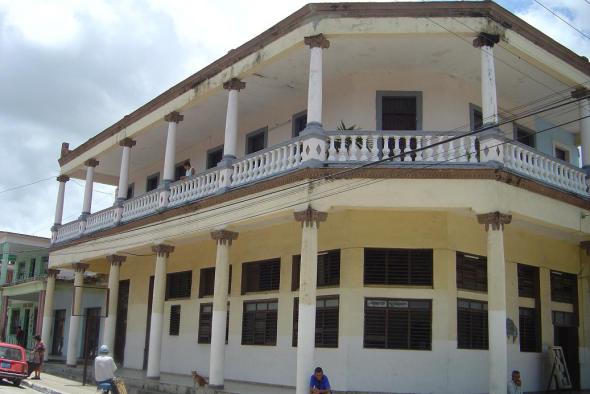Many people believe that the specialists working at these Cultural Arts Centers have gone insane, because they promote such diverse artistic expressions as literature, painting, music, theatre, dance… And, as if all this were not enough, these institutions welcome amateur artists from the communities. Since 1981, the Cultural Arts Centers have become crucial institutions to further develop culture in the communities. However, very few people are now aware of the purposes for which they were created.
With their diverse proposals, the Cultural Arts Centers that exist in all the country’s municipalities serve as the basis for the cultural programming in each territory, hence contributing to the spiritual enrichment of the community and to preserve our traditions and revitalize the Cuban identity. However, only during carnival times or the week-long festivities marking the Cuban Culture Day people are reminded of their existence.
This is perhaps the reason why these institutions have been sinking into oblivion in many Cuban territories.
Strengthening links with other institutions and organizations also related with community work, having increased the participation of professional and amateur artists for the defense of cultural expressions and traditions, as well as getting certain support from local governments and other social actors in designing and coordinating cultural processes, are some of the achievements attained by the Cultural Arts Centers.
Yet, it is necessary the activities organized by these institutions are able to attract a larger number of participants, thus encouraging creativity and providing them with a more active role.
Likewise, it is necessary that the art instructors not only help develop the people’s talent to train future artists, but also help to cultivate aesthetic tastes and minimum knowledge, so they are able to have a more critical appreciation through art, regardless of the people’s education. Coping with the conditions of the buildings and their supplies is imperative as well.
It’s worth saying that in some municipalities, the Cultural Arts Centers fail to take into consideration the needs and requests of the different age groups in the community.
Officials from the Ministry of Culture recently called to put an end to wrong practices while designing cultural programs, as it is the case of shows that attempt against the values encouraged by the Cuban society.
Indispensable institutions
In addition to support the artistic programs included in the national education system, the Cultural Arts Centers deal with courses, workshops, seminars and the audiovisual section. The experiences of this socio-cultural work in the community are passed on through different events. As part of their efforts to preserve Cuba’s traditional culture, they have developed more than one hundred research projects.
Protecting the intangible cultural heritage continues to be the main objective of these institutions. Regarding this, more than 300 initiatives, experiences and cultural projects have been identified in the country, which largely contribute to develop the cultural work in every community and the country in general.
Amid a new panorama where cultural consumption is ever increasing, the Centers must renew their role, so that they can continue encouraging creativity and the capacity to appreciate art. The work of specialists working at these institutions is vital, because art helps to create values and foster love for our country.
Today more than ever, the Cultural Arts Centers must be seen as institutions for the community. It’s necessary to increase the perception of culture, regarding artistic expressions as a means, and not an end, to form good men and women.
One element comes to sight: the communities need to have institutions that serve a source of reference for the people’s daily life.
The Cultural Arts Centers were created in 1981 as spaces that would welcome amateur artists. However, many years earlier, in 1961, Fidel Castro had begun a process to train art instructors that would be sent to the communities and the most remote places. Their role was to teach the people to appreciate and understand art.
With an institution dedicated to amateur artists, they have continued to offer their talent at plazas and avenues. Therefore, they are compelled to continue encouraging people to spend their free time in a more useful way, helping to develop the creative capacity of people from all walks of life.
Translation: Dayami Interián (Cubarte)


Deje un comentario